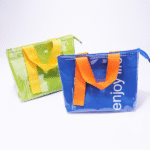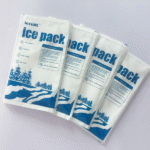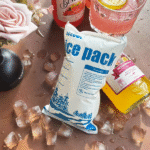El envío de productos perecederos con hielo seco requiere un estricto cumplimiento de las normas de seguridad internacionales para evitar riesgos como la acumulación de presión y la asfixia.. Comprensión cómo etiquetar paquetes de hielo seco según IATA 954 garantiza tanto la seguridad como el cumplimiento normativo. Esta guía proporciona un proceso detallado paso a paso para etiquetar correctamente los paquetes de hielo seco., garantizar el cumplimiento y reducir el riesgo de sanciones.
-
¿Por qué el etiquetado del hielo seco es crucial para la seguridad??
-
¿Cuáles son los requisitos exactos de la IATA? 954 para etiquetado con hielo seco?
-
¿Cómo se etiquetan correctamente los paquetes de hielo seco para evitar sanciones??
-
¿Cuáles son las consecuencias de un etiquetado inadecuado??
-
Últimas tendencias en envasado de hielo seco para 2025.
¿Por qué es esencial el etiquetado adecuado de los paquetes de hielo seco??
Etiquetar los paquetes de hielo seco es crucial para la seguridad, cumplimiento, y transporte eficiente. El hielo seco está catalogado como mercancía peligrosa, y un mal manejo puede provocar accidentes graves, como asfixia o explosión debido a la acumulación de gas CO₂. Seguir las pautas de etiquetado adecuadas no solo garantiza la seguridad del personal sino que también garantiza que su envío cumpla con los estándares internacionales de transporte aéreo., evitando penalizaciones y retrasos.
Razones clave por las que el etiquetado es importante:
-
Seguridad: Previene accidentes relacionados con la acumulación de gas CO₂, que puede ser fatal en espacios reducidos.
-
Cumplimiento: Garantiza el cumplimiento de IATA 954 regulaciones, evitando multas y retrasos.
-
Instrucciones claras: Proporciona a los manipuladores la información de seguridad necesaria..
¿Qué hace la IATA? 954 Requisito para el etiquetado de hielo seco?
Instrucción de embalaje de la IATA (PI) 954 está diseñado específicamente para el transporte seguro de hielo seco. Exige la inclusión de varios elementos clave de etiquetado para minimizar los riesgos durante el transporte aéreo.. Aquí hay un desglose de los requisitos esenciales..
Componentes clave de etiquetado de IATA 954:
-
Número ONU y nombre de envío adecuado:
Todo paquete que contenga hielo seco debe estar marcado con:-
Y 1845 (Dióxido de carbono, sólido)
-
-
Clase de peligro y etiqueta:
-
El hielo seco se clasifica en Clase 9 (Mercancías peligrosas diversas), y una clase 9 La etiqueta de peligro debe estar adherida al paquete..
-
-
Información de volumen de CO₂:
-
Mostrar claramente el peso neto del hielo seco (en kilogramos o libras) y peso bruto (incluyendo contenidos).
-
-
Instrucciones de manejo especiales:
-
La guía aérea debe indicar “Dióxido de carbono, sólido, ONU 1845” junto con instrucciones de ventilación para garantizar que el gas pueda escapar durante el transporte..
-
-
Requisitos específicos de la aerolínea:
-
Formas adicionales como la Declaración de Mercancías Peligrosas puede ser requerido por ciertas aerolíneas.
-
Ejemplo de un paquete de hielo seco correctamente etiquetado:
| Elemento de etiqueta | Detalles | Importancia |
|---|---|---|
| Número de la ONU | Y 1845 | Identifica la sustancia como peligrosa. |
| Nombre de envío adecuado | Dióxido de carbono, sólido | Especifica la sustancia que se envía. |
| Clase de peligro | Clase 9 | Alertas de mercancías peligrosas diversas |
| Peso neto | 5 kilos | Proporciona detalles de manipulación e información de transporte. |
| Notas de manejo especiales | Ventilar, Tenga precaución | Reduce el riesgo de asfixia o rotura. |
¿Cómo se etiquetan correctamente los paquetes de hielo seco??
El proceso de etiquetado de paquetes de hielo seco es sencillo, pero la atención al detalle es crucial. Aquí encontrará una guía paso a paso para garantizar que sus envíos cumplan con la IATA. 954.
Proceso de etiquetado de hielo seco paso a paso:
-
preparar el embalaje:
-
Usa fuerte, contenedores aislados con orificios de ventilación para permitir que el gas co₂ escape.
-
-
Adjunte la etiqueta de peligro:
-
Coloque el Clase 9 etiqueta de peligro en el paquete, asegurándose de que sea visible y no esté dañado.
-
-
Incluya el número ONU y el nombre de envío:
-
Del mismo lado que la etiqueta de peligro., exhibir de manera destacada Y 1845 y Dióxido de carbono, sólido.
-
-
marcar el peso:
-
Enumere tanto los peso neto del hielo seco y el peso bruto del paquete, incluyendo el contenido.
-
-
Agregar instrucciones de manejo especiales:
-
Indique claramente “Hielo seco”y proporcionar instrucciones de ventilación.
-
-
Completar la guía aérea:
-
Complete el En Waybill con el número de paquetes, peso neto por paquete, e instrucciones de manipulación necesarias.
-
-
Revisar los requisitos específicos de la aerolínea:
-
Asegúrese de que todos los formularios requeridos (p.ej., Declaración de Mercancías Peligrosas) se completan antes del envío.
-
¿Cuáles son las consecuencias del etiquetado inadecuado??
Un etiquetado inadecuado puede dar lugar a varias sanciones e interrupciones operativas.. Aquí están las posibles consecuencias.:
-
Multas: Autoridades podrán imponer multas por incumplimiento de IATA 954.
-
Retrasos: Los envíos pueden retrasarse o rechazarse, que afectan a productos sensibles como productos farmacéuticos o alimentos.
-
Confiscación: En casos severos, Los envíos mal etiquetados pueden ser confiscados., conduciendo a pérdidas financieras.
2025 Tendencias e innovaciones en el envío de hielo seco
A medida que la industria de la cadena de frío continúa evolucionando, Hay varias tendencias emergentes que están dando forma a la forma en que se envía el hielo seco.:
Tecnología de monitoreo inteligente:
-
Sensores de monitoreo en tiempo real Incrustado en el embalaje para rastrear los niveles de CO₂ y la temperatura., mejorar la integridad del envío.
Embalaje sostenible:
-
Uso creciente de ecológico Materiales de embalaje que reducen el impacto ambiental y minimizan las tasas de sublimación..
Soluciones de etiquetado digital:
-
El ascenso de herramientas digitales y aplicaciones móviles que generan y rastrean etiquetas de hielo seco que cumplen con las normas, reduciendo el error humano.
Preguntas frecuentes (Preguntas frecuentes)
Q1: ¿Necesito una Declaración del Transportista para envíos de hielo seco??
-
No se requiere una Declaración del Remitente si el hielo seco se utiliza únicamente para enfriar mercancías no peligrosas.. Sin embargo, Es imprescindible completar la guía aérea con los datos necesarios..
Q2: ¿Cuál es el peso máximo permitido de hielo seco por paquete??
-
El peso máximo permitido por paquete es 200 kilos para avión de carga. Los aviones de pasajeros tienen límites más estrictos de 2.5 kilos por pasajero individual.
Q3: ¿Cómo debo empacar hielo seco para envío aéreo??
-
Asegúrese de que su embalaje esté ventilado y aislado para permitir la liberación segura de gas CO₂ durante el tránsito. No utilice bolsas o recipientes sellados..
Conclusión
El etiquetado adecuado de los envíos de hielo seco es una parte fundamental para garantizar el transporte seguro y conforme a las normas de mercancías sensibles a la temperatura.. Siguiendo las directrices establecidas en IATA PI 954, puedes reducir el riesgo de accidentes, evitar multas costosas, y agilizar el proceso de envío. Manténgase siempre actualizado con las últimas regulaciones e incorpore avances tecnológicos para mejorar la seguridad y el cumplimiento..
Acerca de Tempk
En Templ, Nos especializamos en logística de cadena de frío., asegurando que todos los envíos, incluidos aquellos con hielo seco, cumplir con las últimas normas de seguridad. Nuestras avanzadas soluciones de embalaje y experiencia regulatoria garantizan el transporte seguro y eficiente de productos perecederos., Minimizar el riesgo y maximizar la confiabilidad..
Para más información, consulte con un experto de Tempk hoy y asegúrese de que sus envíos cumplan totalmente con los estándares IATA.
























